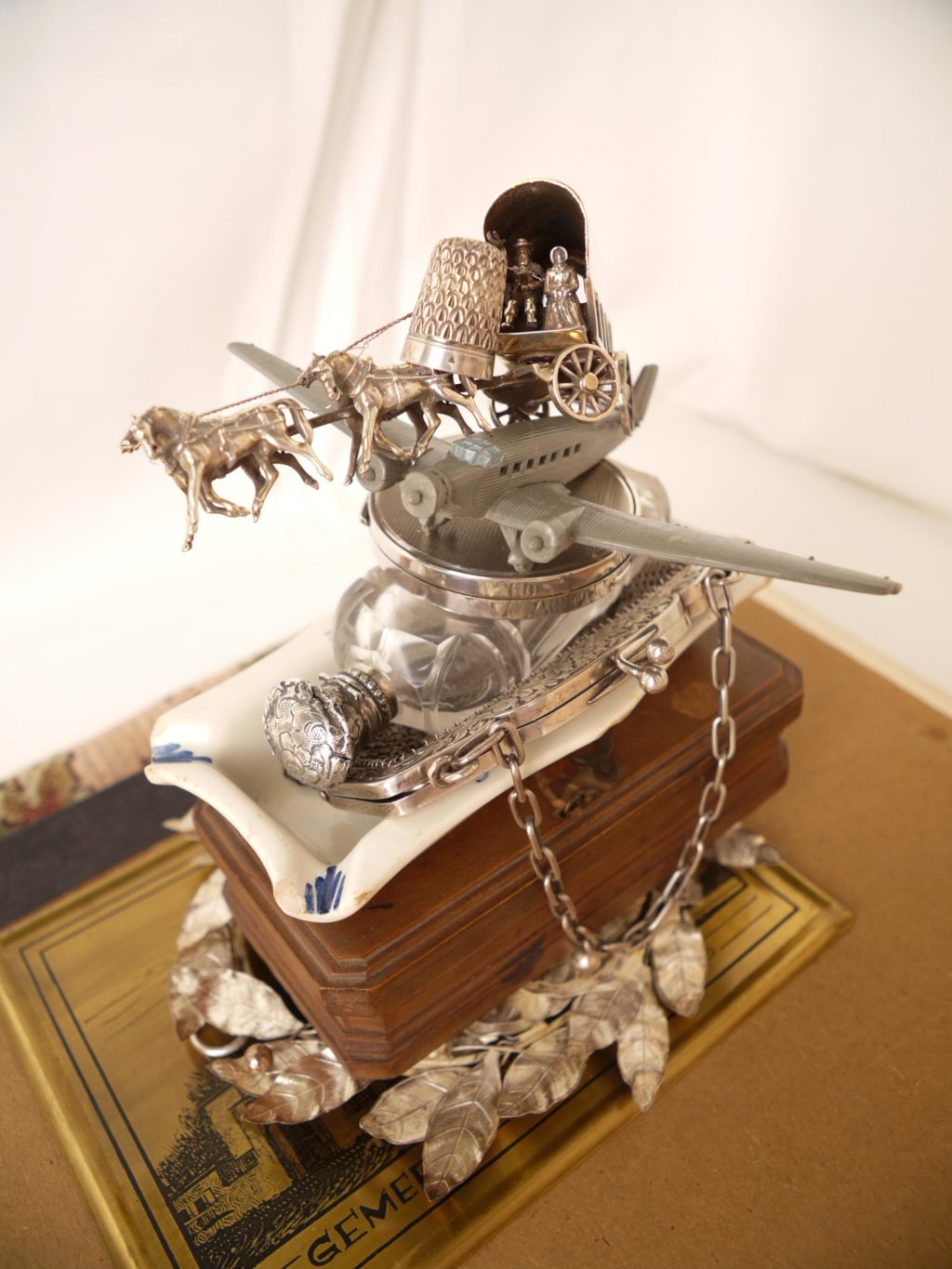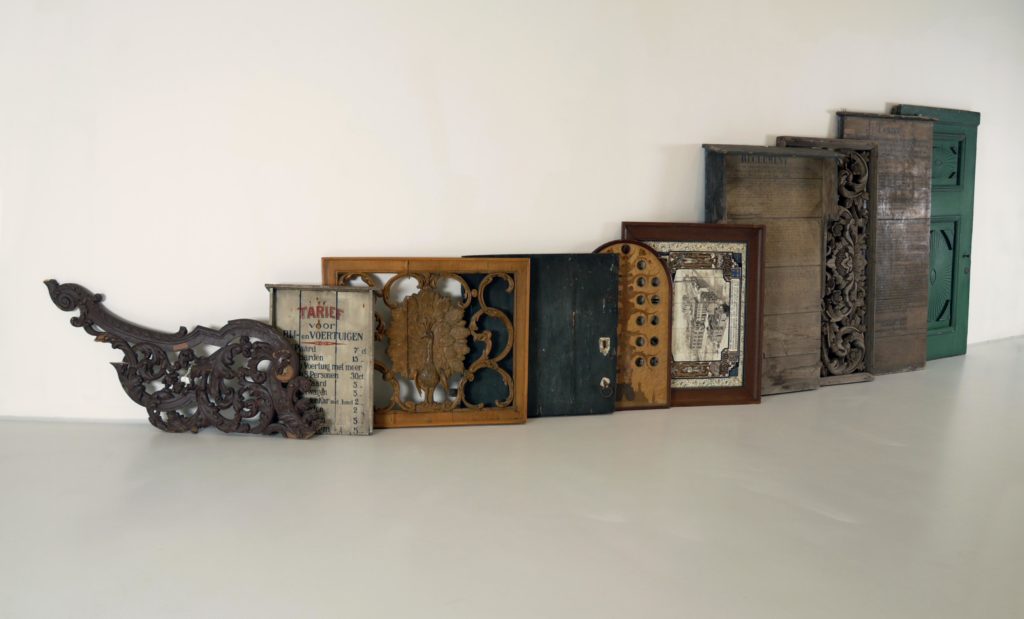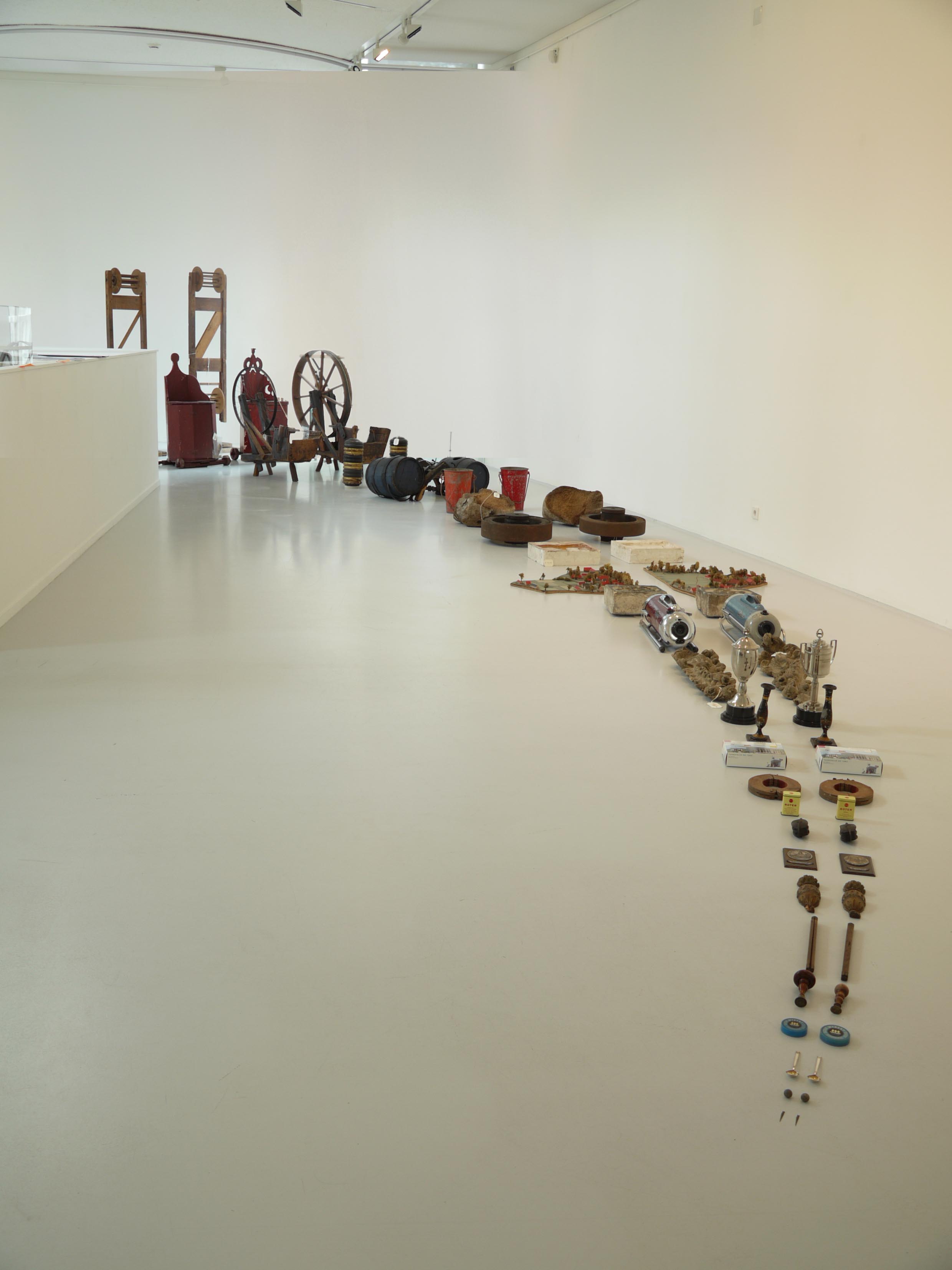
Pairs & Stacks, 2011
Pairs and Stacks
Pairs and Stacks is a solo exhibition realised by South African artist James Beckett, using only items from the collection of the Hilversum Museum. The exhibition has the aim to deal with the nature and quantity of collections, as well as the act and meaning of collecting itself.
A silent basis for the work, is the biography of Henry Wellcome (1853 – 1936), the largest contributor to many British museums. At the time of his death he had amounted a huge collection of basically everything from the far reaches of the earth. As amateur Ethnographer and Medical specialist, Wellcome’s problem had arguably been that he sacrificed quality for quantity, and was never truly to make sense of the majority of what he amassed. He simply had too many items with too little time for processing. It became obvious for many of those around him, that his focus had been on an accumulation, but not an intelligibility of objects.
Following this tendency, Beckett’s work with the museum functions in two ways, – both reflected in the title: ‘Pairs and Stacks’. An arbitrary classification is applied to the collection of the museum, relating to size and numbers, to create an exercise of ordering then displaying objects.
For the first piece, items which occur in pairs are extracted from storage, then ordered in a linear fashion from largest to smallest; appropriately titled ‘Pairs’. This set promises to include (amongst others) a set of fire-fighting buckets and two boxed ‘tankstelle’ models from Germany, as well as a pair of whale-bones which have been licked by cows for the benefit of oral hygiene. These pairs seek to illustrate a cross-section of the museum storage, – irrespective of their period, context or cultural value, a kind of dumbing-down of history. The situation hopes to derive new manner of inter-referencing or comparison within the selection; sense derived from difference rather than independent histories.
The ‘stacks’ are an elaboration of this idea, – taking items and stacking them one on top of the other, from largest to smallest, to form piles. These stacks aim to illustrate the differences between objects, yet at the same time how they can be rendered insignificant once in a state of storage. As a type of death of the object, this robbing of significance is a link to the over-riding theme of the show “Doogewoon*”, (‘Ordinary Death’) and ultimately intends to become a mirror of the artifacts of the Hilversum Museum.
(cit. James Beckett)
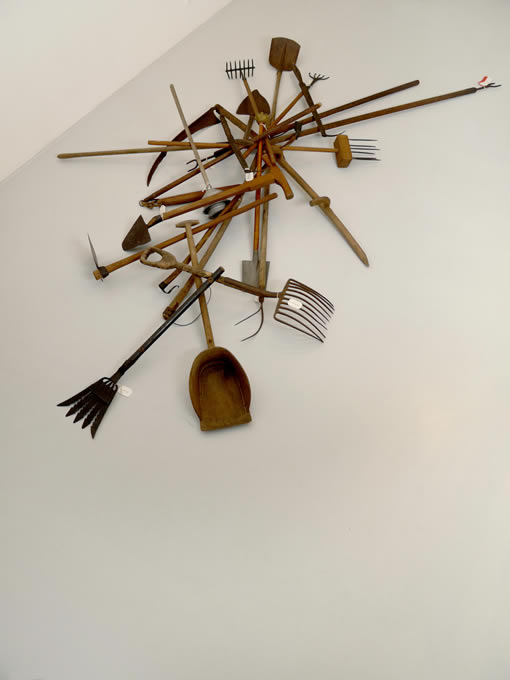
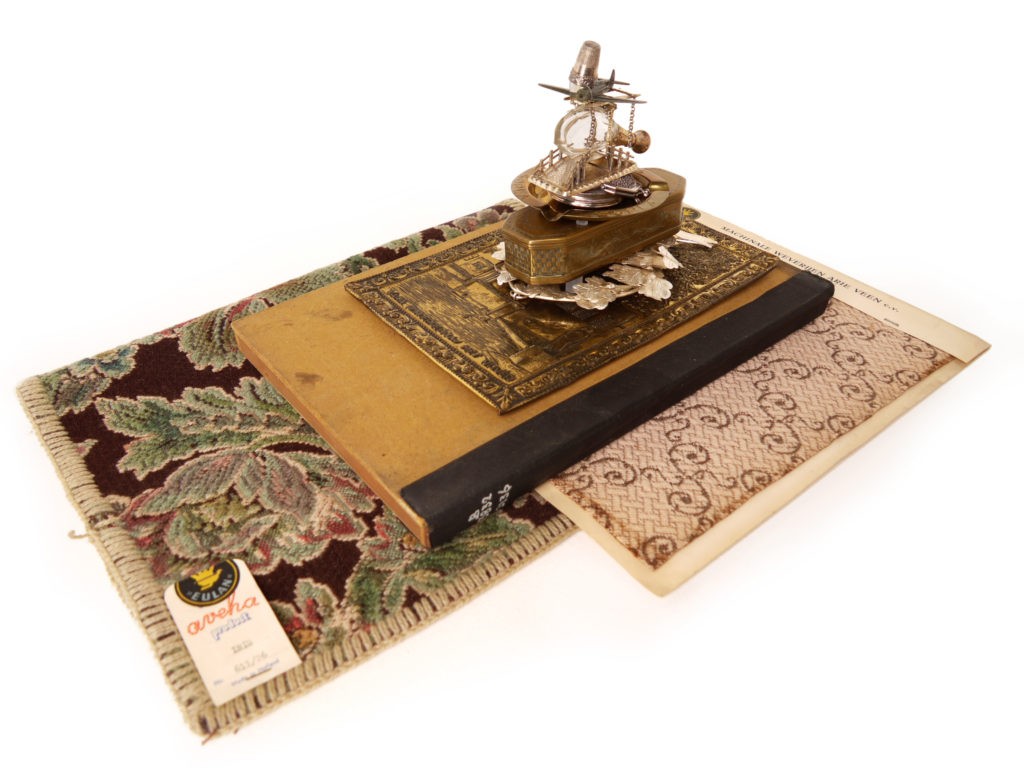
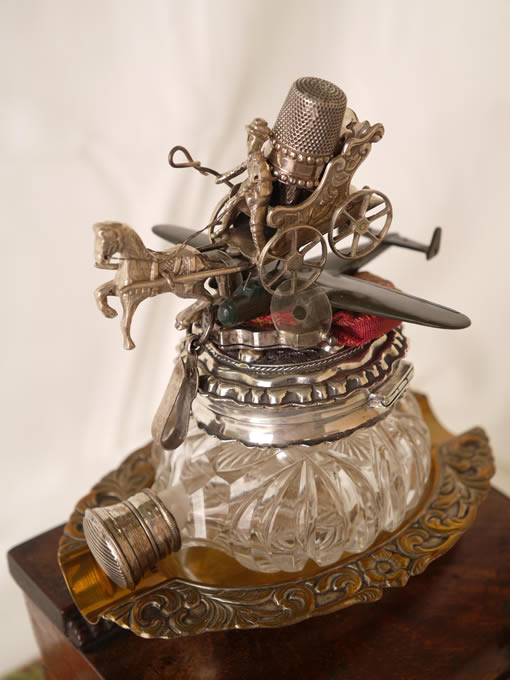
Objects from the collection of Museum Hilversum
